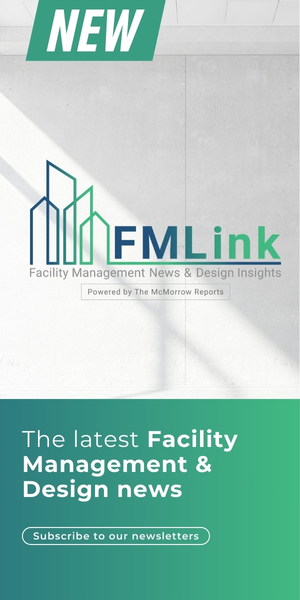June 17, 2020 — The Building Owners and Managers Association (BOMA) International just released a new guidance document to help property professionals who own and/or manage industrial properties to navigate the “new normal” amid the COVID-19 pandemic. The group also published guidance for FMs and owners to consider as they develop fire drill and evacuation plans under current conditions.
COVID-19 guidance for industrial properties
While many tenants in office buildings have been working from home in response to state-mandated stay-at-home orders, most tenants in industrial warehouse, distribution and manufacturing facilities have been reporting to work as usual. “Industrial Re-Set: Operational and Management Guidelines for Industrial Properties Amid COVID-19” provides management best practices for owners and property managers, as well as operational and workforce best practices that may be shared with tenants that occupy industrial space.
Management best practices for owners and property managers include:
Plan and Prepare: Stay abreast of federal, state and local mandates, recommendations, and guidelines, and compile other resources to share with property managers and tenants. Train property managers on new protocols for social distancing, use of personal protective equipment (PPE), tenant and vendor communications, property access, and health assessment and reporting. Review leases and contracts; plan for possible construction delays; and re-assess cleaning, building system maintenance and other protocols for common areas.
Communications with Tenants and Contractors: Ask tenants and contractors to share new health and safety protocols, procedures and plans in writing, including new rules for property managers and contractors to access and perform work in the building and protocols for reporting COVID-19 cases. Offer guidance to tenants on operational changes in response to COVID-19 and suggest resources for cleaning, signage, security and other services if needed.
Building and Property Access for Property Management and Contractors: Notify tenants in writing regarding the landlord’s responsibilities, plans and protocols to access the building to perform inspections, preventive maintenance and other services as required by the lease, and ask all vendors and contractors for advance notice before performing any work on the property. Ask tenants to inform their landlord of any operational changes that could affect parking areas and other property spaces outside the building; consider closing or limiting access to common areas and amenities shared by multiple tenants; and work with brokers to schedule virtual property tours.
Common Area Cleaning: Increase frequency of cleaning and disinfection of high-density and high-touch common areas. Follow Centers for Disease Control and Prevention (CDC) guidelines for more frequent cleaning of outdoor spaces, as well as CDC, US Environmental Protection Agency (EPA) and other guidelines and directions for cleaning products and usage. Request that maintenance personnel and other vendors clean and disinfect spaces, such as mechanical rooms, after service is performed.
Guidance for tenant operations and workforce safety include:
Social Distancing: Follow CDC guidelines to maintain social distancing and federal, state and local mandates or recommendations for wearing face masks or coverings. Post signage, floor markings and other visual guides to communicate and manage social distancing requirements in elevators, lobbies, corridors, workspaces, assembly lines, production areas, break areas, locker rooms, restrooms and other tenant spaces. Restrict access to refrigerators, microwaves and other appliances in break areas and/or clean and disinfect these areas and appliances frequently throughout the day.
Workforce Health and Safety: Communicate new rules, procedures and protocols with workers and building personnel for social distancing, use of personal protective equipment (PPE), health screening/assessments, illness reporting, etc., and provide applicable training. Discourage workers from sharing equipment, phones or computers, and ask workers and contractors to maintain and clean their own tools, if possible. Set up digital and other no-contact transaction and key drop-off procedures with vendors, contractors and delivery personnel, and limit vendor and contractor access to assigned work areas only. Ask employees to notify you if they test positive for COVID-19; tenants should report all confirmed cases to the landlord while protecting the identity of the infected employee. Continue normal and regular HVAC maintenance, including filter changes, and consider increasing exhaust and infusion of outside air, if possible.
Cleaning: Tenants should consult with their cleaning contractor about the scope, level and frequency of cleaning that may be needed based on use, occupancy and other factors and ensure adequate cleaning supplies. Increase cleaning and disinfection frequency in high-density and high-touch areas and surfaces; on forklifts, pallet jacks and other equipment between users; in kitchens, break rooms and restrooms; and on assembly lines, conveyor belts and other production areas between shifts and as practical throughout the day. Encourage workers to regularly clean personal workspaces and equipment and schedule deep-cleaning and disinfection in affected areas if any personnel, employee or visitor tests positive for COVID-19.
BOMA International Chair Scott O. Jones, PE, vice president with Jacobs, pointed out:
Industrial properties face unique challenges as they largely continue to operate while instituting new protocols and measures to protect the health and safety of occupants and personnel. BOMA International’s latest guidance document, its fifth in a series of industry resources, offers industrial property professionals and their tenants the best practices and recommendations to address these challenges both during the COVID-19 pandemic and as they look towards recovery.
To download the “Industrial Re-Set: Operational and Management Guidelines for Industrial Properties Amid COVID-19” (PDF) guidance document and to access all the COVID-19 resources and materials developed and curated by the group, visit BOMA International’s Coronavirus Resource Center.
Guidance for fire drills and emergency evacuations amid COVID-19
As a result of the COVID-19 pandemic, building owners and managers are implementing new office procedures and protocols to promote social distancing and to prevent exposure to the coronavirus. As these protocols are developed, BOMA says property professionals should consider how to handle mandatory fire drill requirements and emergency or fire alarm evacuations.
The information in BOMA International’s latest guidance document, “COVID-19: Preparing for Emergency Evacuations,” can be used to help guide these discussions. The publication offers considerations for building owners and managers as they review and update their organization’s or building’s evacuation procedures.
Download the full “COVID-19: Preparing for Emergency Evacuations” (PDF) document from the BOMA website.
Preparing for emergency evacuations is important in any building, but becomes more critical for upper floors in high-rise buildings. In addition, according to Peter Kimmel, Publisher of FMLink, because of expected changes to the ways social distancing guidelines will be applied to elevators, it can be expected that stairwells will be used as an alternative to elevators more than ever. Depending on whether these changes are short-term or become more common, at some point, this can impact the desirability and availability of space on lower floors of buildings, and eventually may impact the real estate market.
Founded in 1907, BOMA International is a federation of US local associations and global affiliates. The trade association for commercial real estate professionals represents owners, managers, service providers and other property professionals of all commercial building types, including office, industrial, medical, corporate and mixed-use.








